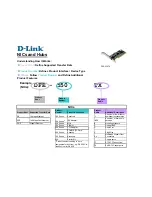
CONFIG-STD-NACL mode
seq
sequence-number
{deny | permit} {source [mask] | any | host
ip-address
} [log [threshold-
in-msgs
count
] ]
2
Specify the interval in minutes at which ACL logs must be generated. You can enter an interval in the range of 1-10 minutes. The
default frequency at which ACL logs are generated is 5 minutes. If ACL logging is stopped because the configured threshold has
exceeded, it is re-enabled after the logging interval period elapses. ACL logging is supported for standard and extended IPv4 ACLs,
IPv6 ACLs, and standard and extended MAC ACLs. Configure ACL logging only on ACLs that are applied to ingress interfaces; you
cannot enable logging for ACLs that are associated with egress interfaces.
CONFIG-STD-NACL mode
seq
sequence-number
{deny | permit} {source [mask] | any | host
ip-address
} [log [interval
minutes
]]
Flow-Based Monitoring
Flow-based monitoring conserves bandwidth by monitoring only the specified traffic instead of all traffic on the interface. It is available for
Layer 3 ingress and known unicast egress traffic. You can specify the traffic that needs to be monitored using standard or extended
access-lists. The flow-based monitoring mechanism copies packets that matches the ACL rules applied on the port and forwards (mirrors)
them to another port. The source port is the monitored port (MD) and the destination port is the monitoring port (MG).
When a packet arrives at a port that is being monitored, the packet is validated against the configured ACL rules. If the packet matches an
ACL rule, the system examines the corresponding flow processor to perform the action specified for that port. If the mirroring action is set
in the flow processor entry, the destination port details, to which the mirrored information must be sent, are sent to the destination port.
Behavior of Flow-Based Monitoring
You can activate flow-based monitoring for a monitoring session using the
flow-based enable
command in the Monitor Session mode.
When you enable this flow-based monitoring, traffic with particular flows that are traversing through the interfaces are examined in
accordance with the applied ACLs. By default, flow-based monitoring is not enabled.
There are two ways in which you can enable flow-based monitoring in Dell Networking OS. You can create an ACL and apply that ACL
either to an interface that needs to be monitored or apply it in the monitor session context. If you apply the monitor ACL to an interface,
the Dell Networking OS mirrors the ingress traffic with an implicit deny applied at the end of the ACL. If you apply the ACL to the monitor
section context, the Dell Networking OS mirrors the ingress and known unicast egress traffic with an implicit permit applied at the end of
the ACL. This enables the other traffic to flow without being blocked by the ACL.
When you apply an ACL within the monitor session, it is applied to all source interfaces configured in the monitor session.
The Dell Networking OS honors any permit or deny actions of the ACL rules used for flow-based mirroring. Packets that match a mirror
ACL rule is denied or forwarded depending on the rule but the packet is mirrored. However, the user ACL has precedence over the mirror
ACL.
The same source interface can be part of multiple monitor sessions.
Flow-based monitoring is supported for SPAN, RSPAN, and ERSPAN sessions. If there are overlapping rules between ACLs applied on
different monitor sessions, the session with the highest monitor session ID takes precedence.
NOTE:
You can apply only IPv4 ACL rules under monitor session context.
You must specify the
monitor
option with the
permit, deny
, or
seq
command for ACLs that are assigned to the source or the
monitored port (MD) to enable the evaluation and replication of traffic that is traversing to the destination port. Enter the keyword
monitor
with the
seq
,
permit
, or
deny
command for the ACL rules to allow or drop IPv4, IPv6, ARP, UDP, EtherType, ICMP, and TCP
packets. The ACL rule describes the traffic that you want to monitor, and the ACL in which you are creating the rule is applied to the
134
Access Control Lists (ACLs)
Summary of Contents for S3048-ON
Page 1: ...Dell Configuration Guide for the S3048 ON System 9 11 2 5 ...
Page 137: ...0 Gi 1 1 Gi 1 2 rx Flow N A N A 0 0 No N A N A yes Access Control Lists ACLs 137 ...
Page 142: ...Figure 10 BFD Three Way Handshake State Changes 142 Bidirectional Forwarding Detection BFD ...
Page 241: ...Dell Control Plane Policing CoPP 241 ...
Page 287: ... RPM Synchronization GARP VLAN Registration Protocol GVRP 287 ...
Page 428: ...Figure 53 Inspecting the LAG Configuration 428 Link Aggregation Control Protocol LACP ...
Page 477: ...Figure 73 Configuring Interfaces for MSDP Multicast Source Discovery Protocol MSDP 477 ...
Page 478: ...Figure 74 Configuring OSPF and BGP for MSDP 478 Multicast Source Discovery Protocol MSDP ...
Page 483: ...Figure 77 MSDP Default Peer Scenario 2 Multicast Source Discovery Protocol MSDP 483 ...
Page 484: ...Figure 78 MSDP Default Peer Scenario 3 484 Multicast Source Discovery Protocol MSDP ...
Page 745: ...Figure 104 Single and Double Tag TPID Match Service Provider Bridging 745 ...
Page 746: ...Figure 105 Single and Double Tag First byte TPID Match 746 Service Provider Bridging ...
















































